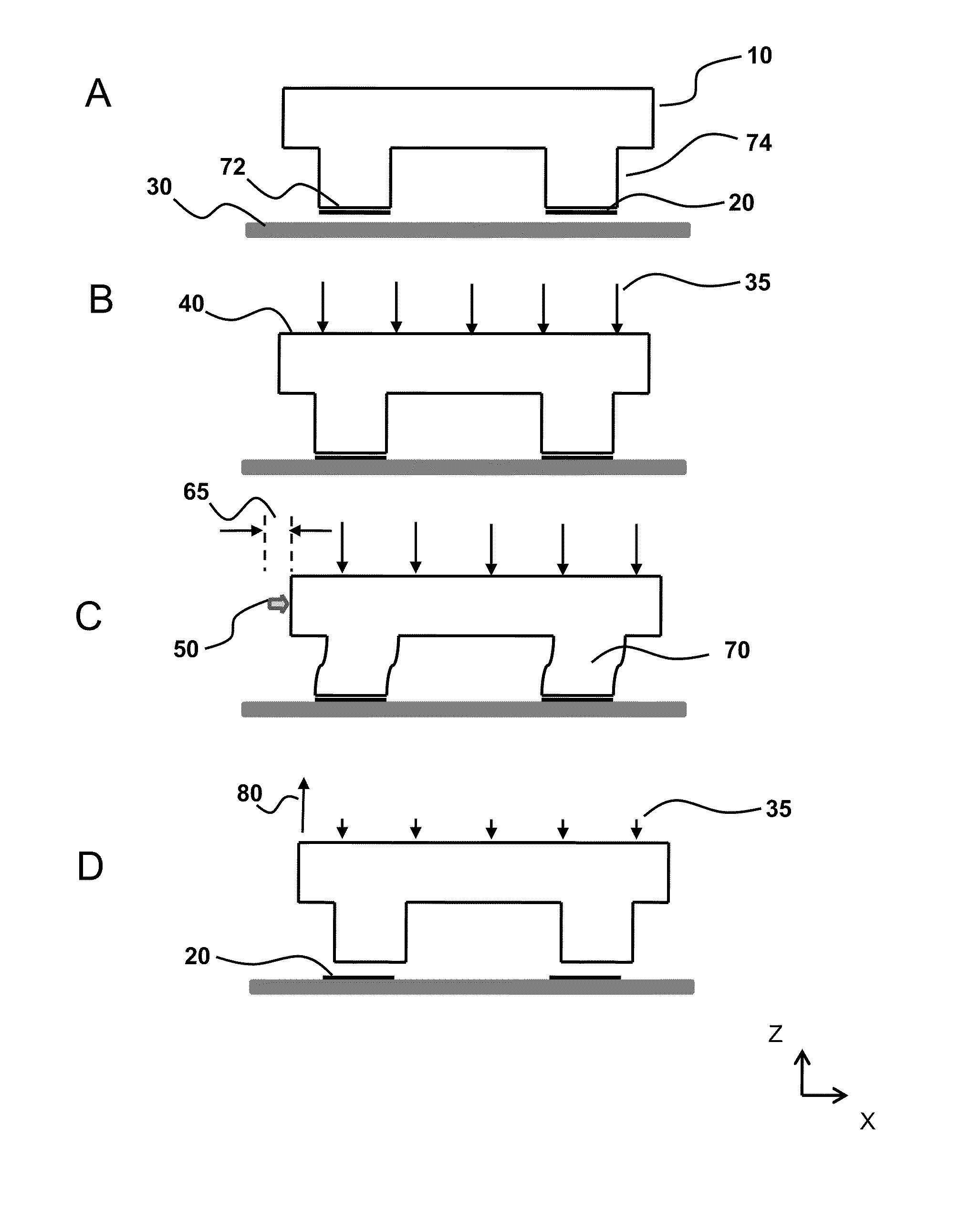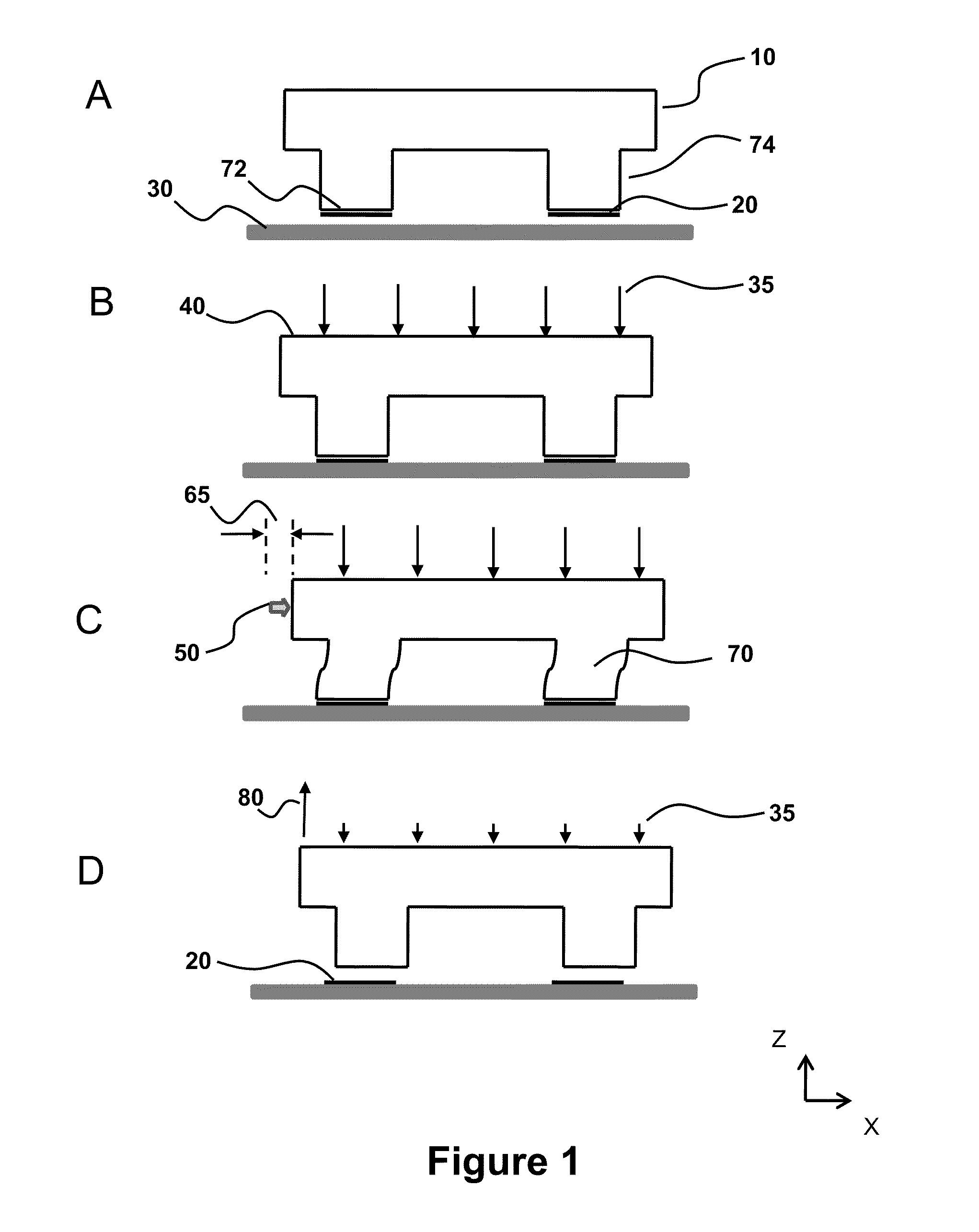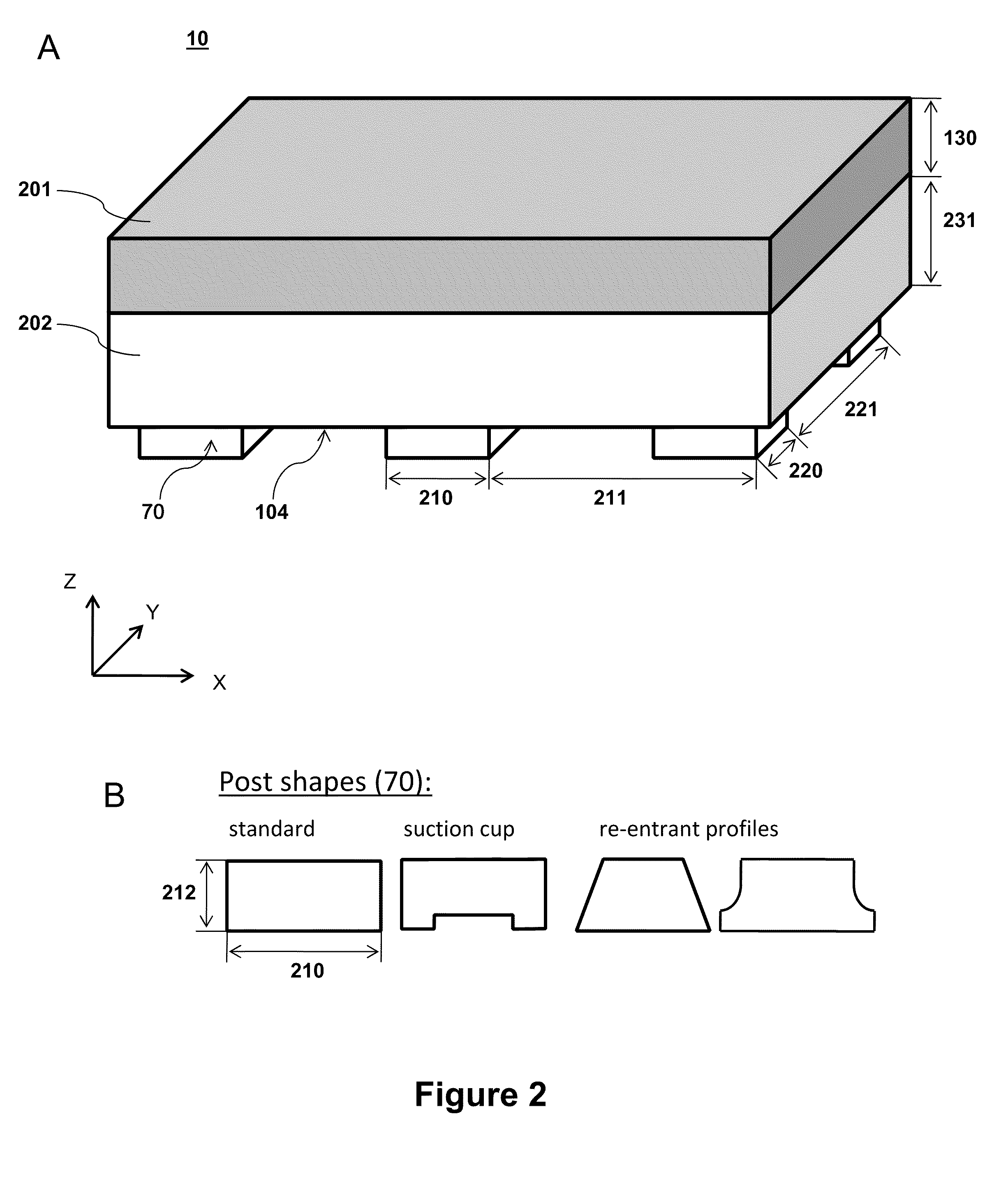Printing semiconductor elements by shear-assisted elastomeric stamp transfer
a technology of elastomeric stamps and semiconductor elements, which is applied in the direction of dough shaping, manufacturing tools, applications, etc., can solve the problems of low energy required to initiate delamination of the transfer stamp surface, and achieve faster and more reliable transfer printing, sacrificing printing yield or accuracy, and high delamination rate
- Summary
- Abstract
- Description
- Claims
- Application Information
AI Technical Summary
Benefits of technology
Problems solved by technology
Method used
Image
Examples
Embodiment Construction
[0047]“Printing” refers to a process of transferring a feature, such as a semiconductor element, from a first surface to a second surface. In an aspect, the first surface is a donor surface and the second surface a receiving surface, and the transfer is mediated by an intermediate surface such as a stamp having a transfer surface. In an aspect, the first surface is a transfer surface on a stamp to which one or more semiconductor elements are supported, and the stamp is capable of releasing the elements to a receiving surface on a target substrate, thereby transferring the semiconductor element. In an aspect, the printing is dry transfer printing of printable semiconductors, wherein the adhesive force between a solid object and the stamp surface is rate-sensitive.
[0048]“Stamp” refers to a component for transfer, assembly and / or integration of structures and materials via printing, for example dry transfer contact printing. Composite stamps, such as composite stamps disclosed in U.S. ...
PUM
| Property | Measurement | Unit |
|---|---|---|
| plane displacement | aaaaa | aaaaa |
| plane displacement | aaaaa | aaaaa |
| pressure | aaaaa | aaaaa |
Abstract
Description
Claims
Application Information
 Login to View More
Login to View More - R&D
- Intellectual Property
- Life Sciences
- Materials
- Tech Scout
- Unparalleled Data Quality
- Higher Quality Content
- 60% Fewer Hallucinations
Browse by: Latest US Patents, China's latest patents, Technical Efficacy Thesaurus, Application Domain, Technology Topic, Popular Technical Reports.
© 2025 PatSnap. All rights reserved.Legal|Privacy policy|Modern Slavery Act Transparency Statement|Sitemap|About US| Contact US: help@patsnap.com



